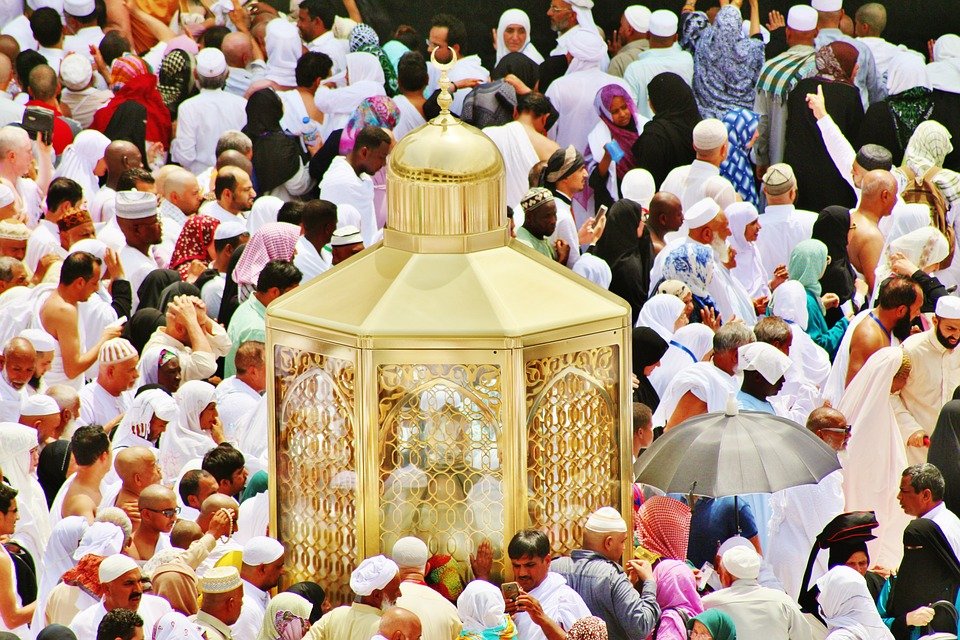You are here to read: How Did Ibrahim Reject Satin? Hajj History Explained – A Thoughtfully Written Guide Offering Spiritual Wisdom and Travel Advice for Every Pilgrim who is going on holy journey of Hajj or Umrah.
In this article, we will explore how did Ibrahim reject Satin in the context of Hajj history. Understanding this pivotal moment sheds light on the spiritual significance behind the rituals of Hajj that millions undertake each year. I promise you will find a comprehensive guide to “how did Ibrahim reject Satin Hajj history,” revealing the lessons and values embedded in this essential part of Islamic tradition. By the end of this article, you’ll have a clearer grasp of this vital topic that enriches our understanding of faith and devotion during the Hajj.
The importance of how did Ibrahim reject Satin Hajj history cannot be overstated. It not only highlights Ibrahim’s unwavering faith but also serves as a cornerstone for Islamic practice during the Hajj pilgrimage. In my opinion, these lessons are as relevant today as they were centuries ago. We at Airlinkhajjandumrah.com bring nearly a decade of experience in Umrah and Makkah, Medinah travel since 2016. With our expertise, we feel confident in providing you with valuable insights about “How Did Ibrahim Reject Satin? Hajj History Explained.” Join us as we unravel the timeless teachings of Ibrahim and their significance in today’s world.
How Did Ibrahim Reject Satan? Hajj History Explained
The Story of Ibrahim and Satan
The tale of Ibrahim rejecting Satan holds immense significance in Islamic tradition. It serves as a powerful reminder of faith, resilience, and the triumph of good over evil. Ibrahim, known as Abraham in other religions, faced numerous trials throughout his life. Each challenge tested his belief and commitment to Allah. When Satan attempted to sway him, Ibrahim stood firm, showcasing his unwavering faith.
During pivotal moments, particularly when he prepared to sacrifice his son, Ibrahim faced temptations. Satan tried to instill doubt and fear in his heart. However, Ibrahim’s deep connection with Allah fortified him against these attempts. He understood that true devotion means overcoming these inner battles, demonstrating to all believers the strength of faith in the face of adversity.
The Temptation of Ibrahim
When Satan approached Ibrahim, he employed clever tactics to undermine his resolve. He aimed to exploit Ibrahim’s fears about the consequences of obeying Allah’s command. The temptations were subtle yet powerful, designed to shake Ibrahim’s conviction. However, instead of succumbing, Ibrahim turned to prayer and reflection, seeking guidance and strength from Allah.
This powerful moment illustrates an essential lesson for all of us. Ibrahim’s awareness of Satan’s deceptions highlights the importance of staying alert to negativity in our lives. By focusing on faith and committing to righteousness, we strengthen our ability to resist temptations. Ibrahim’s choices encourage us to seek divine support when confronted with challenges, reminding us that faith can conquer even the most persuasive doubts.
The Significance of Stones in the Story
As part of the story, Ibrahim threw stones at Satan when he attempted to tempt him. This act carries profound symbolism. The stones represent resistance against temptation and the act of casting away negativity. Each stone signifies a strong refusal to be swayed by evil whispers. This powerful image reminds pilgrims during Hajj of the importance of guarding their hearts against distractions.
You're at the middle of this awesome post at AirlinkHajjandUmrah.com through: How Did Ibrahim Reject Satin? Hajj History Explained. Keep reading, it gets better!
The practice of throwing stones at the pillars during Hajj replicates Ibrahim’s refusal to yield to Satan’s influence. It serves as a tangible reminder of his unwavering faith and dedication to Allah. By engaging in this ritual, hajj pilgrims participate in a tradition that has persisted through generations, linking them to Ibrahim’s righteous stand against temptation.
Lessons from Ibrahim’s Example
Ibrahim’s story provides invaluable lessons for us all. His resilience showcases the importance of steadfastness in our faith. When we face challenges in life, it’s easy to lose hope or doubt our beliefs. Yet, Ibrahim’s triumph over Satan encourages us to remain resolute. By nurturing our beliefs and seeking guidance, we can effectively combat the doubts that try to infiltrate our hearts.
Additionally, Ibrahim teaches us about the significance of relying on Allah during trying times. His unwavering trust can inspire us to put our faith into action. When we face hardships or decisions, turning to prayer and reflection can provide the clarity we need. Incorporating this practice into our lives can fortify us against negativity and help us stay focused on our spiritual goals.
The Link to Hajj Pilgrimage
The story of Ibrahim is integral to the Hajj pilgrimage, symbolizing faith and submission. Each ritual during Hajj echoes Ibrahim’s experiences and teachings. From standing at Arafat to the symbolic stoning of the pillars, these acts connect us to Ibrahim’s legacy. They remind us that every pilgrim shares in this profound journey of faith and perseverance.
As pilgrims engage in these rituals, they reflect on Ibrahim’s choices. This connection imparts a sense of spirituality and purpose to their pilgrimage. By embracing Ibrahim’s lessons, each person embarks on a personal quest for faith and redemption. The rituals create a communal bond among pilgrims as they collectively honor Ibrahim’s faith and commitment.
Spiritual Reflections for Pilgrims
Engaging with the story of Ibrahim empowers pilgrims to reflect on their faith. It prompts introspection about one’s own challenges and doubts. When facing personal trials, remembering Ibrahim’s strength can inspire individuals to maintain their faith. Pilgrims often find comfort in knowing they are part of a lineage of unwavering believers.
Moreover, discussing Ibrahim’s battles against temptation fosters a supportive community. Sharing insights and experiences with fellow pilgrims reinforces the essence of togetherness in faith. Through these conversations, individuals encourage each other to rise above fears, instilling a sense of belonging and accountability. This camaraderie enhances the spiritual experience of Hajj, creating lasting bonds among pilgrims.
Conclusion: Embracing Ibrahim’s Legacy
In conclusion, the story of Ibrahim rejecting Satan provides profound insights for Hajj pilgrims. His rejection of temptation stands as a testament to unwavering faith and determination. By incorporating his teachings into our lives, we can navigate our challenges effectively. The symbols and rituals tied to Ibrahim during Hajj remind us of our shared heritage and the power of collective faith.
As pilgrims embark on their spiritual path, embracing Ibrahim’s legacy enriches their experience. They not only honor a great prophet but also cultivate their inner strength against adversity. Ultimately, Ibrahim’s story serves as a beacon of hope, inspiring future generations to uphold their faith amidst trials.
That wraps up How Did Ibrahim Reject Satin? Hajj History Explained. Thanks for sticking with us till here! Share this: How Did Ibrahim Reject Satin? Hajj History Explained with your friends.
Check our homepage at Air Link Hajj & Umrah for more awesome updates.
Some interesting posts are: 1: Umrah Mubarak, 2: When is Umrah closed 2026?, 3: When does Umrah start after Hajj 2026?
Mushu, an experienced Saudi Arabia traveler and writer, shares insightful tips and spiritual reflections to enhance Hajj and Umrah journeys for fellow pilgrims. He has been to Makkah and Madina from 2016 to 2023 many times and his posts will reflect this.







